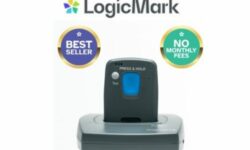PERS Summit Raises Dealers’ Business Acumen, Addresses Challenges
Hosted by AvantGuard Monitoring, PERS Summit 2017 in Park City, Utah, delivered technology trends, networking opportunities and sage advice of subject matter experts in the legal and financial fields.

Philip Kujawa, partner at Chicago-based Hinshaw & Culbertson, addressed the crowd, stating, [Limitation of liability is] the most important clause to have, especially in the PERS industry.”
Held in the world-class skiing destination of Park City, Utah, the surrounding mountains truly put the “summit” in PERS Summit 2017. But it’s the wide-ranging presentations, product exhibitions and networking opportunities during the event, hosted by AvantGuard Monitoring at The Chateaux Deer Valley Sept. 26-28, that really provide attendees a peak experience.
This year marked the fourth staging of the biannual event by AvantGuard, which welcomed attendees to tour its newly remodeled headquarters and monitoring center in nearby Ogden prior to the PERS Summit opening reception.
The following morning, Vice President Troy Iverson kicked off the event and turned things over to AvantGuard President and COO Justin Bailey for the first presentation, “Insights and the Future of PERS Monitoring.”
Getting More From Today’s Tech
Bailey took a look back at some predictions he made during the 2013 event and offered hits (demise of the landline, rise of mobile PERS, more enhanced location services) and misses (greater convergence between PERS and telehealth, more obsolescence of equipment refurbishment).
When it comes to communications technology, for instance, Bailey presented data on households with a working landline dwindling from 92.7% in 2002 to just 45.9% in 2016; meanwhile, AvantGuard has experienced a rise in mPERS from just 3% in 2013 to 36% in 2015 and up to 55.3% this year.
“I expect to see that trend continue,” Bailey said, “but I don’t see it completely taking over the market — there’s still a need for an in-home unit.”
One of the reasons PERS Summit is held every other year rather than annually is because the category does not see technology changes as rapidly as others in the security industry, Bailey admits. But advancements are occurring, plus today’s technology could be more effectively put to use, he suggests.

“‘Voice First’ is one of the most exciting categories that should be increasingly interfaced with your products. We don’t in later years want to deal with typing, pinching, swiping, etc., with an interface.” – Laurie Orlov, Aging in Place Technology Watch
For instance, what he calls “interactive parallel monitoring” to employ text messaging and web-based group chats by which multiple caregivers can be contacted simultaneously instead of operators making their way down a call list with potential unanswered calls taking away precious response time.
“We have the capability to send out text messages to all caregivers at the same time, that help is needed, paramedics are on the way, and we can also include a link to go to a chat room that becomes a web-based group chat where they can enter and interact and coordinate personal response for a loved one,” Bailey explains. “Our operators can post updates and keep caregivers apprised of what’s going on. This isn’t groundbreaking technology.”
Bailey suggests interactive parallel monitoring can improve notification and response times; foster more meaningful caregiver involvement; and increase subscriber retention.
Meanwhile, he notes that technology such as WiFi positioning, IPS and other near-field communication beacons are helping to more accurately locate the origin of a PERS device in use, so for instance if a person at a shopping mall needs help their specific store location is known or for in-home emergencies the exact room they are in.
Increasing Telehealth Convergence Inevitable
Regarding PERS when it comes to telehealth, another presentation on the Summit’s first day was by Laurie Orlov, principal analyst and founder of market research provider Aging in Place Technology Watch, who highlighted the importance of the technology for caregivers and seniors.
Advancements in PERS and features such as predictive analytics and voice control may be especially beneficial in a home care industry that Orlov says is experiencing a labor shortage due to low pay and high turnover.
“There’s a serious problem happening right now,” she says, noting that fast-food jobs pay better than home health care jobs, for instance.
“Home care needs partners, devices and services. What matters most to families and caregivers is information,” she says, praising the potential for PERS communication as not only an emergency system but as an everyday concierge too. “We can take the usage of a PERS device, match it with the health status of a frail individual, and predict the next time they’ll need to go to the hospital — predictive analytics.”
Orlov mentioned how Japan is investing heavily in robotics as a solution to the home caregiver shortage, but for now while there’s high interest in such products they are not quite ready for prime time in the aging-in-place segment. She does, however, hold in high regard the possibilities for PERS and tie-in to voice command and wearables as boons to telehealth convergence.
“‘Voice First’ is one of the most exciting categories that should be increasingly interfaced with your products. We don’t in later years want to deal with typing, pinching, swiping, etc., with an interface,” she told attendees regarding smartphone functions.
Bailey had previously noted that research shows smartphone usage has a steep dropoff after age 65; from 74% for the age group 50-64 down to 42% for 65+. Orlov added that what she called Voice First provides meaningful engagement by which seniors can speak to devices and hear responses, and interaction with products like Amazon Echo and Google Home can be particularly beneficial for those with dementia, for instance.

Assaf Sella of Israeli-based Kytera, one of the PERS Summit’s many vendor sponsors, chats with dealers.
Her research estimates that there are 9 million voice devices in the home already, and that by 2018 30% of technology interactions will be via voice. Orlov sees similar promise for wearables.
“At some point fitness interest gives way to safety interest,” Orlov said of impending evolution for wearables as PERS devices. “The beacon technologies can notify if someone leaves the house, provide fall detection … we really have opportunity to do remote monitoring, and can do more detection.”
In fact, one company that attended PERS Summit as a bronze sponsor, UnaliWear, began as a solution for founder/CEO Jean Anne Booth to keep tabs on her own mother. Summit sponsors set up tables to exhibit between presentations at the event.
Other bronze sponsors included DSC, OnKöl, Kytera, SecuraTrac, Alarm.com and EarlySense Live; silver sponsors were Climax, Telguard, Instant Care, Essence and Kore; and gold sponsors were Freeus, Mytrex and Nortek Security and Control.
Learning From Lawyers, Lenders
Beyond products and technologies, PERS Summit welcomed other sponsors and attendees representing important business areas such as operations management, financial and legal sectors.
Presenters included Philip Kujawa, partner at Chicago-based Hinshaw & Culbertson who specializes in representing PERS and alarm dealers in catastrophic loss cases, on “PERS Cases in Court”; Eric Allen, managing attorney at Allen, Mitchell & Allen in Holladay, Utah, on “New Regulations for Texting and Automated Calls”; and Henry Edmonds, president of The Edmonds Group, and Hugh Van der Veer, attorney with Buchanan Ingersoll & Rooney, tag-teaming a “Best Practices for Buying and Selling a PERS Business” session.
Kujawa suggested steps to be made by PERS dealers at each phase of the possible litigation process (most commonly personal injury and wrongful death claims) from mitigation of risk, to pre-lawsuit action plan, and actions after receiving notice of a lawsuit.
He admonished PERS dealers to not only make sure proper contracts are used for each client, but that the dealers be very familiar with the clauses and wording in the contracts, that the documents are up-to-date and that they’ve been signed by appropriate people.
“I want the wearer of the pendant to sign if they can but there are many explanations as to why that doesn’t always happen,” Kujawa says. “The next best thing is to get the person who is most responsible, most involved in that person’s life, the one who’s paying the bills, on the call list … they’re the one most likely bringing the lawsuit and if they signed a contract it’s pretty effective when trying to enforce [your] defense.”
Toward that end, Kujawa cautions dealers to try and avoid accepting bad risks associated with clients, such as putting on call lists antagonistic family members or those who may live far away and are not involved in being a part of the caregiving.
“Your gut means something to you in this business,” he says. At the very least, be sure to have limitation of liability clauses front and center in your contract. “It’s the most important clause to have, especially in the PERS industry,” Kujawa says.
Elsewhere on the legal front, Allen provided tips to help avoid landmines in the communications area, as his specialty is federal telemarking laws and compliance. He laid out some basic principles for when companies could and not could employ cellphone calls, SMS texts, automated “robocalls” and more, and what level of consent was needed from prospects and clients.
The good news for PERS dealers is that emergency calls constitute a major exemption to consent. The bad news is that fines by the FTC are now almost $41,000 per violation — which means per call — plus there’s a rise in “serial litigators” against those who use telemarketing, Allen says.
“Robocall cases have hit the medical device industry as well; it’s not just about auto warranties, diet supplements and timeshares,” he notes. “You have legitimate business reason and ability to reach out using your technology for marketing and nonmarketing reasons to clients and prospects who need your product. And there are a lot of people who are looking to trip you up.”
Among Allen’s advice to dealers is to always be able to prove they have necessary consent, and honoring the Do Not Call list and opt-outs.

Aron Ralston (far left) concluded the Summit with his keynote “Between a Rock and Hard Place,” his tale of survival that was chronicled in the movie “127 Hours.”
For their back-and-forth on buying/selling a PERS business, Edmonds outlined preparatory strategies from the seller’s perspective, while Van der Veer covered the buyer’s side. “There’s at least a half dozen lenders here at the Summit,” Edmonds noted. “That’s a validation of this industry.”
Along with looking at common operational reporting areas — customer creation costs, attrition, margins, RMR, growth rate — because PERS businesses often have clientele in multiple states, one area Edmonds notices many companies may be weak is ensuring all state and local taxes (SALT) have been duly paid.
“It’s likely that you owe some form of tax in every state in which you have customers,” he suggests, mentioning property tax, sales tax on equipment and sales tax on monitoring among types of SALT. “It’s going to be expensive when a buyer raises the issue, and you can’t come into compliance if haven’t been paying in past. In my experience, smaller companies are not as familiar with how big an issue this is.”
Van der Veer notes that two of the biggest deal-killers are surprises and speed, or trying to rush the sale. “They want to look at all the numbers and make sure they jibe with what they’re giving to lender,” he says.
On top of the technology, legal and financial talk, additional inspiration for PERS Summit attendees came from two compelling keynotes on day two, by home-grown motivational speaker Jason Hewlett who talked about keeping promises to yourself and customers; and outdoor adventurist Aron Ralston, whose harrowing survival story in which he amputated his own arm became the subject of the movie “127 Hours.”
If you enjoyed this article and want to receive more valuable industry content like this, click here to sign up for our FREE digital newsletters!

Security Is Our Business, Too
For professionals who recommend, buy and install all types of electronic security equipment, a free subscription to Commercial Integrator + Security Sales & Integration is like having a consultant on call. You’ll find an ideal balance of technology and business coverage, with installation tips and techniques for products and updates on how to add to your bottom line.
A FREE subscription to the top resource for security and integration industry will prove to be invaluable.














